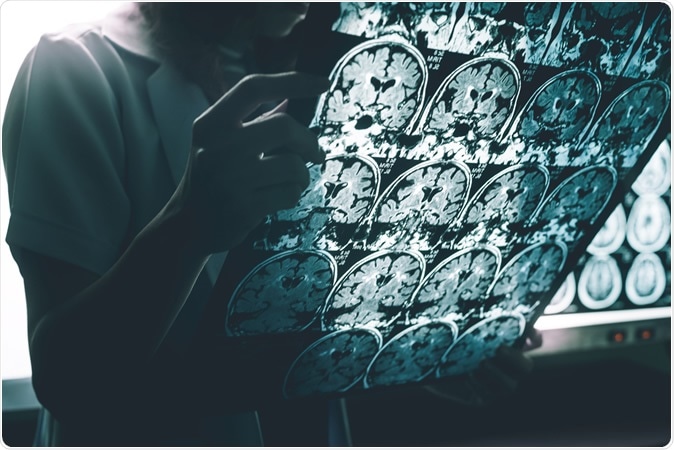With tens of millions of people the world over being affected by dementia, and almost 80% of them suffering from Alzheimer's disease (AD), the Early Detection of Neurodegenerative diseases (Edon) is looking into a novel device to test for AD early in the process, using wearable technology. This will play a crucial role in intervening and preventing the progression of this disease, the prevalence of which has increased by almost 90% since 2000.
ARUK EdoN End - Final Cut 090419 16x9 Texted
The need
Advanced AD is generally not reversible, making it essential to detect and treat the disease early before it is clinically apparent. Earlier research shows that AD changes in the cognitive, motor and sensory functions occur years before the earliest clinical manifestations can be picked up. Existing cognitive tests have several limitations, including the time required, their insensitivity at early stages of the disease, the ability to be 'learned' which makes the responses on repeat testing virtually useless, and the need for subjective analysis. Imaging techniques may be better but are costly and invasive at present.
Wearable sensing technology
Wearable devices could be the way out. Wearable devices can retrieve information about the gait, movements, heart rate, patterns of sleep, and similar parameters. For instance, a pilot study in the UK showed that using inexpensive sensors worn over the body could pick up changes in the way the individual walks and behavioral changes, which are essential sensitive indicators of early or impending dementia.

Alzheimer's disease on MRI. Image Credit: Atthapon Raksthaput / Shutterstock
Their advantages include:
- The easy and wide availability
- Excellent connectivity providing immediate information
- Increasing sensitivity and the ability to use multiple sensors
- The ability to pick up physical and cognitive symptoms and signs
- No or little burden on the healthcare system
- Flexible approach allowing passive or prompted measurements
Gait and movement sensors
One researcher from the gait sensor project at Newcastle University Human Movement Science, Lynn Rochester, says, "Free-living gait analysis at home is particularly useful as it allows objective observation of an individual's day-to-day activity. It also has the benefit of providing continuous data over a prolonged time that may be more sensitive than one-off assessments." Early changes include alterations in gait speed, stride, and symmetry.
Fine motor movements may become more clumsy or slow. The sensing of typing or stylus-based drawing itself may offer sensing opportunities.
Other capabilities
Speech and language metrics, eye movements, and pupillary movements are also useful in detecting degeneration in multiple networks. Autonomic nervous system function is reflected by measures like heart rate, heart rate variability, sleep patterns due to disruption of circadian rhythms, and even social and mood changes may all be potentially detected by wearable sensors.
The researchers will be using information from several studies that are ongoing, hoping that by applying artificial intelligence (AI) to the data to get a prototype up and running over the next three years.
Beyond the enormous amount of work involved in predicting AD in the preclinical stages, developing consumer devices capable of reliable sensing, and analyzing the data, extensive studies will be required to provide an accurate measure of variability between subjects and at various times in the same person. Data security is also crucial in this aspect.
The project
The project is partly funded by philanthropist Bill Gates, and partly owes some of its budget to the UK government which wants to use AI on data to prevent chronic diseases and understand how they work. The project will begin work with the UK's Alan Turing Institute, the premier national institute for data science and artificial intelligence.
This part of the project will see the collection of reams of data from studies into AD that are still going on at present. This is because, in the words of the Institute's Chris Holmes, "Artificial intelligence has the potential to transform the learning opportunities from large-scale data studies such as Edon by integrating information from multiple sources. We will use AI to deliver new insights into the early signals of disease by combining digital data measurements with traditional sources such as brain imaging and memory tests."
The idea is to come up with a "digital fingerprint" that can be read using a wearable technology or a smartphone app, thus ensuring that people who are at most risk for several chronic medical conditions, can be identified early for appropriate interventions. The aim is to detect the very first changes in the brain, which would help arrest many of these conditions before they lead to dementia, and the person becomes, in many cases, unable to live normally.
The study will draw volunteers from the 2019 project called Accelerating Detection of Disease Program. This is targeting 5 million volunteers to help change the way disease is diagnosed, using the data they provide on AD, cancer, and heart disease. AI will help detect patterns that will, in turn, help identify AD.
The researchers want to classify and analyze this to understand what signs of the disease occur earlier in its course so that in the future, there will be an early warning system. Previous studies have indicated the feasibility of this as an inexpensive, multicentre home-based approach to monitoring patients more efficiently while still reducing the burden on the healthcare network. It could also boost the efficiency of clinical trials.
Sources:
- Wakefield, J. (2020). Wearable to spot Alzheimer's being developed. https://www.bbc.com/news/technology-51474115
- Medicaldevice-network.com. (2018). Wearable devices may offer alternative for Alzheimer's diagnosis. https://www.medicaldevice-network.com/news/wearable-devices-may-offer-alternative-alzheimers-diagnosis/
- Kourtis, L.C., Regele, O.B., Wright, J.M. et al. Digital biomarkers for Alzheimer's disease: the mobile/wearable devices opportunity. npj Digital Med 2, 9 (2019). https://doi.org/10.1038/s41746-019-0084-2. Kourtis, L.C., Regele, O.B., Wright, J.M. et al. Digital biomarkers for Alzheimer's disease: the mobile/wearable devices opportunity. npj Digital Med 2, 9 (2019). https://doi.org/10.1038/s41746-019-0084-2. https://www.nature.com/articles/s41746-019-0084-2#article-info